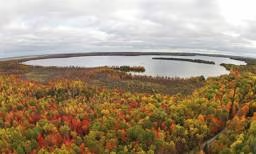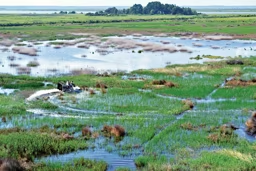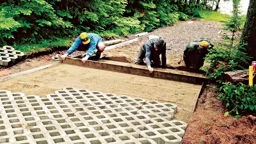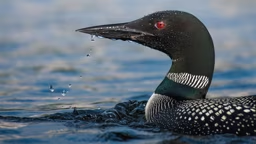We’re all familiar with the old adage “many hands make light work,” and while it’s tough to admit that anything to do with the cabin is a chore, there’s always plenty to be done. But like most things, bringing committed folks together often makes tough tasks more tolerable and hard conversations easier to voice while fostering a “let's-get-it-done” attitude. And you might even have some fun while doing it!In the following stories, you'll discover the successes of a lake association, the passion of a seasonal residents' advocacy group and the compassion of some warm-hearted (and cold-bodied) friends jumping into a good cause.
WEED WHACKING WARRIORS
Way back in 2003, Kevin Horrocks wrote about lake associations for Cabin Life. Although he’s been a member of his own lake’s organization “off and on for seven or so years,” he’d been mostly content to pick up trash when needed or attend a forum here and there. However, the last couple of years found Kevin and his wife, Susan, “in the deep end” of the Courte Oreilles Lake Association’s (COLA) efforts to save their lake.
While aggressive milfoil gets a lot of attention, the problem on Lac Courte Oreilles and its adjoining body of water, Little Lac Courte Oreilles, is curly leaf pondweed (CLP). This curse-worthy flora grows early and spreads easily, crowding out native plants. And as Kevin will tell you, “It is mighty hard to get rid of.”
A Herculean Task
How difficult are the many steps involved in keeping this weed in check? “Hard” feels like an understatement; try “epic” or “herculean.” The volunteers must monitor water temperatures for weed emergence, take samples and use underwater cameras to track outbreaks, map the shape of the weed bloom with GPS devices, assist the engineers with treatment applications – and then go back to monitoring the 5,000-acre lake. “Roughly, it’s probably about 300 hours of work,” Kevin estimates of the large coordinated effort.
This doesn’t even count all the behind-the-scenes build-up. Like all projects involving a shared resource, it starts slowly with buy-in. This means garnering support from all the interested parties – in this case, from property owners to local farmers to the Native American community. “We also must place a public notice in the newspaper, too, in case citizens want to come talk about it,” says Kevin. But nothing happens until Wisconsin’s Department of Natural Resources, the proverbial "Fat Lady" in this drama, says so.
The approval process involves the presentation of a formal plant management plan documenting where the invasive plants are and the precise size and shape of the bloom. “The state issues the permit for the exact amount of treatment needed; it’s a very controlled process,” assures Kevin.
Paying & Paying it ForwardTreating the lake is very costly. To encourage the 400-plus members to contribute to the expense, a foundation was established for this and other lake projects. Money gets distributed through a grant application process, and Kevin says it has helped immensely. “Now people can make donations to the foundation, and it’s tax deductible.” Huge projects like these need to be supported by both the kind folks willing to get wet and treat weeds, but also by people who are able to write checks.
“I get it; the last thing vacationers want to do is come up on Friday, go back on Sunday and spend the time in-between dealing with invasive species,” says Kevin. What he believes makes this project work is that everyone on the lake understands that water quality is key to the whole experience – from kids swimming to maintaining property values – and are willing to do what they can. For many weekenders, that help comes in the form of financial support and a little old-fashioned gratitude. “People who live several hours away and can’t volunteer regularly go out of their way to thank the board and committees for all the work,” says Kevin, who lives year round on the lake. When you’ve spent your day slouched over a computer or a GPS device in the cold, that sort of “attaboy” can go a long way.
The board does its best to keep that good feeling going round. COLA will be sharing their hard-won knowledge at an upcoming Wisconsin Lakes Convention seminar. “We’ll walk folks through our methodology for training volunteers to I.D. weeds and their locations, and how to set up ‘clean boat’ activities at boat launches on busy weekends to educate the public on how these species are spread,” says Kevin. “It’s been a lot of work, and we’re happy to help other lakes with the knowledge we have.”
DEFENDERS OF VACATIONERS RIGHTS
Not all cabin associations protect a particular vacation spot; some are around just to watch out for your consumer rights. The folks at the Wisconsin Seasonal Resident Associations (WiSRA) are all about making sure out-of-state cabin owners are treated fairly as tax-paying seasonal residents. And by “fairly,” that means equal access to amenities like the local library, community pool or county-run golf course.
Founder Nick Kaufmann and his wife started the organization some 17 years ago when they saw locals receiving different treatment than their seasonal neighbors. “It’s easy to forget that those people with out-of-state plates are actually property owners contributing to the local tax base too,” says Nick, who saw a clear need for an organization to advocate on behalf of part-time residents.
Part of this process has been illuminating the gray in a spectrum that at first glance seems quite black and white. There are often times a set of fees for residents and then a different, higher rate for non-residents – without any consideration for people who pay property taxes in one state, but reside in another.
For example, in Door County, the standard had always been that locals paid one price for a cemetery plot and non-residents paid another – a difference of $575. WiSRA stepped in. “We brought in our attorneys and explained that the current taxpayers own this cemetery, and when you sell a plot you can’t discriminate against any of the people who pay to maintain it.”
Nick says that 95 percent of the time when speaking to a local municipality about an issue, the governing bodies will see the perspective of the cabin owners and amend their policies. He’s also quick to stress that they’re not there to be “confrontational out-of-staters with a big chip on our shoulders,” but rather an organized effort to make part-time community members feel more a part of the communities they love and support.
SKIERS FREEZIN’ FOR A REASON
It was five years ago that the recreational group, Winnebago Water Wizards of Lake Winnebago, Mo., got the charitable (if not sanest) idea to throw a water-ski benefit on New Year’s Day. Over the years, the air temperature has ranged from a high of 40 degrees to a wind chill low of just 8 degrees. One particularly uncooperative New Year’s Day, the lake was completely iced over, but that didn’t stop the group from having one heck of a good time for a good cause.
The "Freezin' for a Reason" event raises funds for the Chris and Vickie Cox family whose three children suffer from a rare, genetic condition called Shwachman-Diamond Syndrome. It’s a life-threatening illness with limited and very expensive treatment options.
Poor weather or frozen rope lines haven’t stopped a few hundred generous spectators in their effort to help the Cox’s family contend with medical bills. One of the organizers, Rich LaPietra, said, “The event’s awareness keeps growing and this year the group raised $20,000.” It’s a number made all the more impressive when you consider only 15 skiers actually got behind the boat this year on that chilly 14-degree day, but still managed to significantly increase the funds raised over previous years’ totals.
For these groups and the countless others like them, it’s not enough to just live on the lake – they work to sustain it, protect it and make it a better place for all. Consider our hats off to you.
Lucie B. Amundsen has great respect for the impressive work being done by lake associations all across the country.



 STEVE UMLAND
STEVE UMLAND  STEVE UMLAND
STEVE UMLAND 
 STEVE UMLAND
STEVE UMLAND  STEVE UMLAND
STEVE UMLAND 










